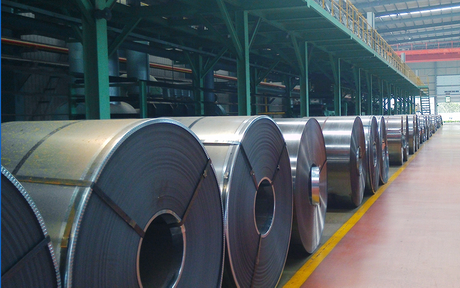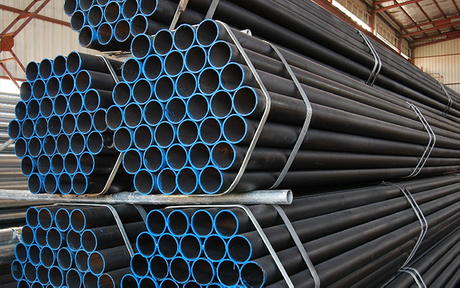Corrugated sheets are a common sight in our daily lives, from the packaging materials we use to the roofs of our homes. These sheets, with their distinctive wave-like patterns, are not just about aesthetics; they offer a range of practical benefits that make them a popular choice in various industries. This article delves into the world of corrugated sheets, exploring their definition, types, and the numerous advantages they bring to the table.
What is a corrugated sheet?
Corrugated sheets are flat materials that have been shaped into a wave-like pattern. This pattern is created by pressing or folding the material, resulting in a series of parallel ridges and grooves. The term “corrugated” comes from the Latin word “corrugare,” which means to contract or wrinkle. This wrinkled or ridged design is what gives corrugated sheets their unique properties.
These sheets can be made from a variety of materials, including paper, metal, plastic, and even glass fiber. The choice of material often depends on the intended use of the corrugated sheet. For example, corrugated cardboard is commonly used for packaging due to its lightweight and recyclable nature, while metal corrugated sheets are preferred for roofing and construction due to their durability and strength.
The thickness and depth of the corrugation can vary, affecting the sheet’s strength, flexibility, and insulation properties. Thicker and deeper corrugations generally provide greater strength and insulation but may be heavier and less flexible. Conversely, thinner and shallower corrugations are lighter and more flexible but offer less strength and insulation.
Types of corrugated sheets
Corrugated sheets come in various types, each designed for specific applications and offering unique properties. The most common types are corrugated cardboard, metal, plastic, and fiber-reinforced polymer sheets. Each type has its own set of characteristics, making it suitable for different uses.
Corrugated cardboard sheets
Corrugated cardboard sheetsare primarily made of paper and are widely used for packaging and shipping. They consist of a fluted corrugated sheet sandwiched between two liners. The fluted medium provides strength and cushioning, while the liners protect the contents. Corrugated cardboard is lightweight, recyclable, and cost-effective, making it an ideal choice for packaging. It is also used for temporary structures and displays due to its ease of handling and printing capabilities.
Metal corrugated sheets
Metal corrugated sheetsare typically made of steel or aluminum and are used in construction, particularly for roofing and siding. They are known for their durability, strength, and resistance to weather elements. Metal corrugated sheets can be coated with various finishes, such as paint or galvanization, to enhance their corrosion resistance. They are available in different thicknesses and profiles, allowing for customization based on structural requirements and aesthetic preferences.
Plastic corrugated sheets
Plastic corrugated sheetsare made from materials like polypropylene (PP) or polyvinyl chloride (PVC). They are lightweight, waterproof, and resistant to chemicals, making them suitable for a wide range of applications, including signage, packaging, and temporary barriers. Plastic corrugated sheets are available in various colors and thicknesses and can be easily cut, printed, and formed into different shapes. They are also recyclable and offer good impact resistance.
Fiber-reinforced polymer (FRP) corrugated sheets
Fiber-reinforced polymer (FRP) corrugated sheetscombine the strength of fiberglass with the lightweight properties of polymers. They are known for their high strength-to-weight ratio, corrosion resistance, and UV stability. FRP sheets are commonly used in applications where exposure to harsh environments is expected, such as in chemical plants, water treatment facilities, and agricultural buildings. They can be manufactured in various colors and transparencies, allowing for natural lighting and aesthetic appeal.
Applications of corrugated sheets
Corrugated sheets are incredibly versatile and find applications in a variety of industries. Their unique properties, such as strength, flexibility, and insulation, make them suitable for a wide range of uses, from packaging to construction and beyond.
Construction and building materials
In the construction industry, corrugated sheets are used for roofing and siding. Metal corrugated sheets, in particular, are popular due to their durability and resistance to weather elements. They provide excellent protection against rain, snow, and wind, and their lightweight nature makes them easy to install. Additionally, corrugated sheets are used as formwork for concrete, providing temporary support during the curing process.
Packaging and shipping
Corrugated cardboard is the go-to material for packaging and shipping due to its lightweight and cost-effectiveness. The fluted design provides cushioning and strength, making it ideal for protecting goods during transit. Corrugated cardboard boxes are easy to stack and store, and they can be printed with branding and product information, making them a practical choice for retailers and manufacturers.
Agricultural applications
In agriculture, corrugated sheets are used for various purposes, including roofing for barns and storage sheds, as well as for creating temporary structures like greenhouses and animal shelters. The insulation properties of corrugated sheets help regulate temperature and protect livestock and crops from harsh weather conditions. Additionally, plastic corrugated sheets are often used for packaging agricultural products, such as fruits and vegetables, due to their moisture resistance and durability.
Signage and advertising
Corrugated sheets, particularly those made of plastic, are widely used for signage and advertising. Their lightweight and durable nature makes them suitable for both indoor and outdoor use. Corrugated plastic signs are resistant to fading, weathering, and vandalism, ensuring that they maintain their appearance over time. They are commonly used for real estate signs, political campaigns, and event promotions.
Transportation and automotive
In the transportation and automotive industries, corrugated sheets are used for interior and exterior components. For example, corrugated plastic sheets are often used for trunk liners, interior panels, and cargo area dividers due to their lightweight and impact-resistant properties. Additionally, corrugated metal sheets are used for body panels and undercarriage components, providing strength and protection against corrosion.
Advantages of corrugated sheets
Corrugated sheets offer numerous advantages, making them a preferred choice in various applications. Their unique properties, such as strength, flexibility, and insulation, provide practical benefits that are highly valued in both industrial and commercial settings.
Strength and durability
The corrugated design of these sheets provides significant strength and rigidity, allowing them to withstand heavy loads and resist deformation. This makes them ideal for use in construction, packaging, and automotive applications. Metal corrugated sheets, in particular, are known for their durability and resistance to weather elements, making them suitable for roofing and siding. Additionally, the corrugated structure helps distribute stress evenly across the sheet, reducing the risk of failure under load.
Lightweight and cost-effective
Corrugated sheets are typically lightweight, which makes them easy to handle, transport, and install. This can lead to significant cost savings in terms of labor and shipping. For example, corrugated cardboard is widely used for packaging due to its lightweight and cost-effectiveness. In construction, the lightweight nature of corrugated sheets can reduce the overall load on structural elements, potentially lowering material and foundation costs.
Insulation and energy efficiency
Corrugated sheets, especially those made of materials like fiberglass or polycarbonate, offer excellent insulation properties. They can help regulate temperature and reduce energy costs by minimizing heat transfer. This is particularly beneficial in agricultural applications, where proper insulation can protect livestock and crops from extreme temperatures. In commercial buildings, energy-efficient roofing and siding made of corrugated sheets can significantly reduce heating and cooling costs, contributing to sustainability efforts.
Versatility and customization
Corrugated sheets are available in a wide range of materials, sizes, and profiles, allowing for customization based on specific needs. This versatility makes them suitable for a variety of applications, from construction to packaging and advertising. For example, corrugated sheets can be manufactured in different thicknesses and depths of corrugation to meet structural requirements. Additionally, they can be coated or painted to achieve desired aesthetic qualities or to enhance resistance to environmental factors.
Environmental benefits
Many corrugated sheets are made from recyclable materials, such as paper and plastic, making them an environmentally friendly choice. Corrugated cardboard, in particular, is highly recyclable and can be reused multiple times, reducing waste and conserving resources. Furthermore, the lightweight nature of corrugated sheets can lead to lower transportation emissions, contributing to a smaller carbon footprint. In construction, using corrugated sheets made from recycled materials can help achieve green building certifications, such as LEED.
Conclusion
Corrugated sheets are an integral part of our daily lives, offering a range of practical benefits that make them a popular choice in various industries. From construction to packaging and agriculture, their unique properties, such as strength, durability, and insulation, provide solutions to a wide array of needs. As industries continue to seek more sustainable and efficient materials, corrugated sheets, with their versatility and environmental benefits, are likely to play an increasingly important role in the future.












